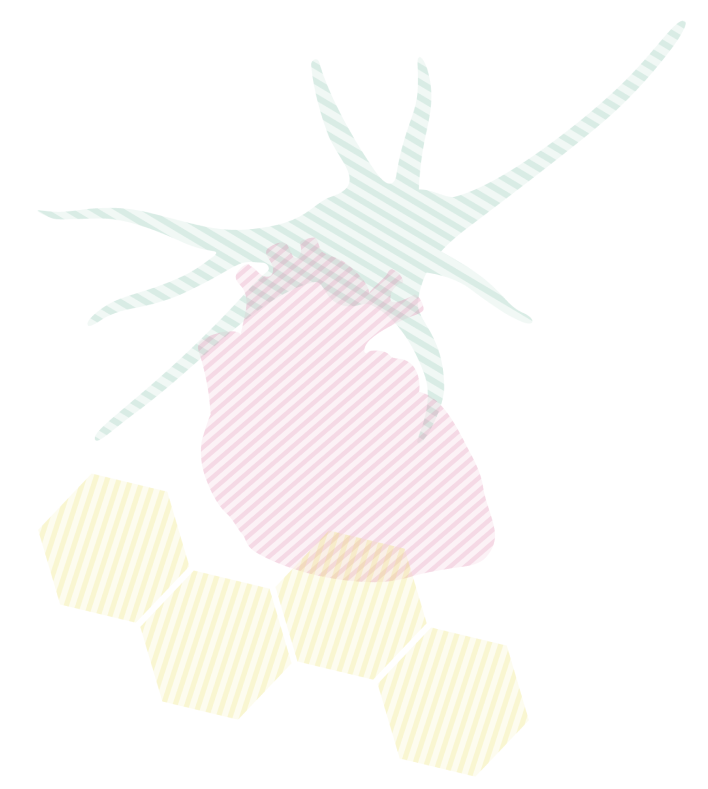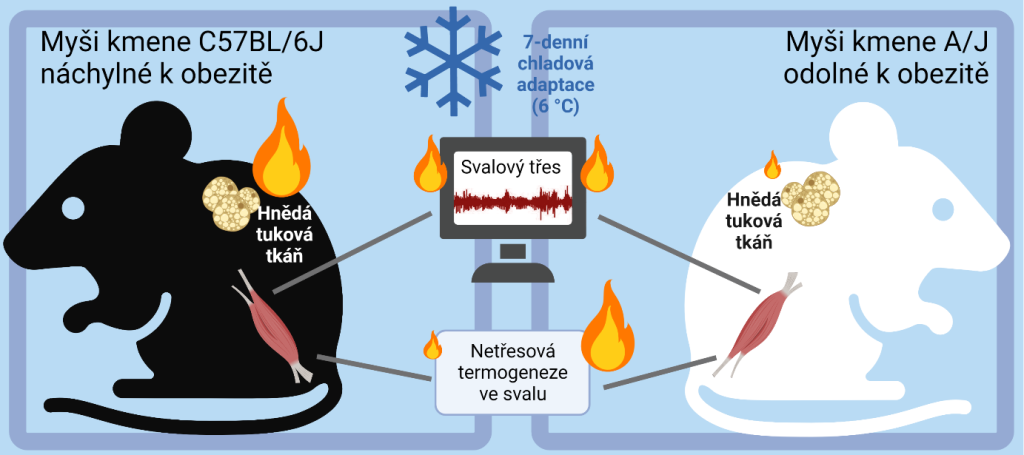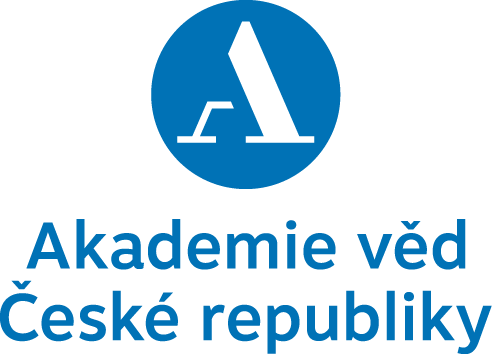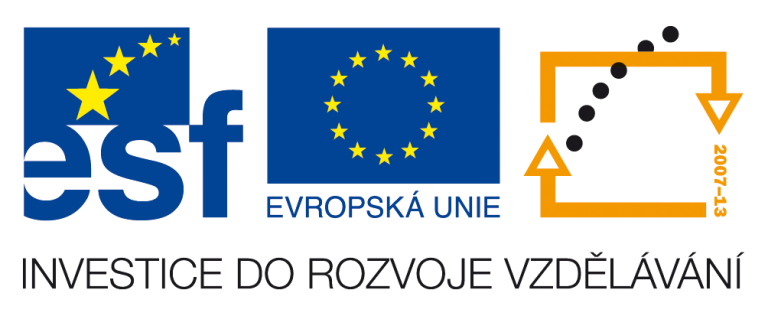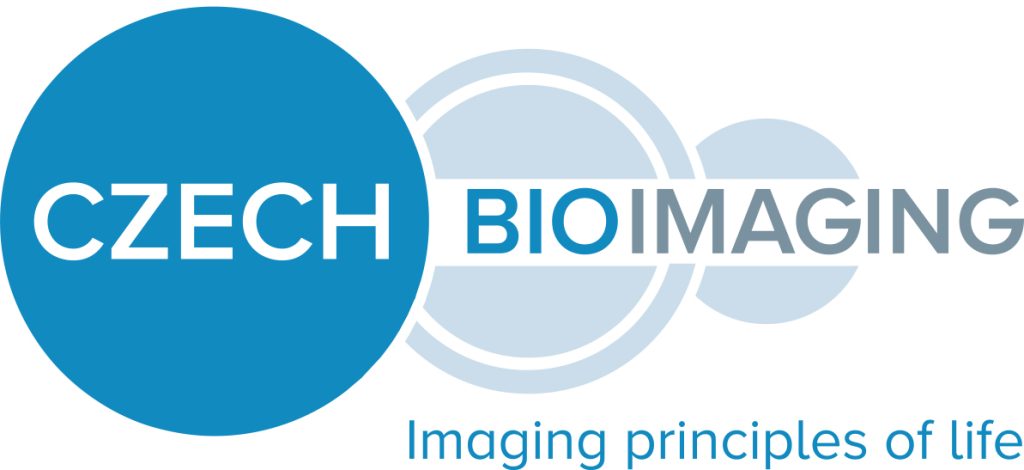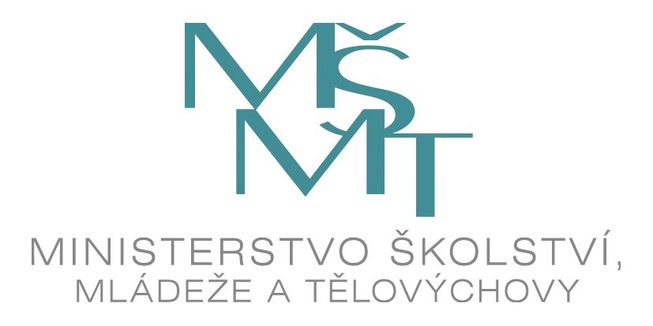Heat production (thermogenesis) is essential for maintaining a constant body temperature, and is an important component of energy balance. Well-described mechanisms involved in heat generation include muscle shivering or non-shivering thermogenesis in brown adipose tissue. Thermogenesis in brown adipose tissue, which is dependent on the presence of the mitochondrial protein UCP1 (uncoupling protein 1), is the focus of interest for its potential use in the treatment of obesity. Other mechanisms of non-shivering thermogenesis and their significance are relatively poorly understood.
Scientists at the Institute of Physiology, Academy of Sciences of the Czech Republic, Prague, investigated heat generation in two different strains of laboratory mice (C57BL/6J and A/J) that differ in their susceptibility to obesity. In C57BL/6J mice, obesity can be induced by a high-fat diet, whereas in A/J mice obesity does not occur under these conditions. Mice of both strains were able to acclimate to cold with only a small decrease in body temperature, initially using muscle shivering for thermogenesis. Prolonged exposure to cold led to activation of thermogenesis in brown adipose tissue in obesity-prone mice. Surprisingly, however, obesity-resistant mice failed to activate brown adipose tissue but increased non-shivering thermogenesis in skeletal muscle. Heat generation in muscle involved increased calcium ion cycling in the endoplasmic reticulum associated with higher mitochondrial oxidative activity.
The involvement of different thermogenic mechanisms could be related to the different susceptibility to obesity. The resistance of A/J mice to obesity is probably due to their ability to activate non-shivering thermogenesis in muscle. These results, published in Molecular Metabolism, also suggest a new possibility for obesity treatment by activating non-shivering thermogenesis in muscle. This is probably a more promising way to treat obesity than potential therapies based on increasing thermogenesis in brown adipose tissue. Especially because in the adult human, the capacity of skeletal muscle to burn fat energy stores is several fold greater than in brown adipose tissue. Thus, only a relatively small increase in thermogenesis in muscle could significantly reduce adipose tissue deposition. How to achieve such an increase is a challenge for further research
Janovska, P., P. Zouhar, K. Bardova, J. Otahal, M. Vrbacky, T. Mracek, K. Adamcova, L. Lenkova, J. Funda, T. Cajka, Z. Drahota, S. Stanic, A. C. Rustan, O. Horakova, J. Houstek, M. Rossmeisl and J. Kopecky (2023). „Impairment of adrenergically-regulated thermogenesis in brown fat of obesity-resistant mice is compensated by non-shivering thermogenesis in skeletal muscle.“ Mol Metab 69: 101683. IF = 8.568 DOI

